A Tech Entrepreneur’s Cool Yet Practical New York Bachelor Pad
New Yorkers have a reputation for restlessness, a stereotype exacerbated by the wealth of diversions available on every corner. But not everyone approaches the scene with reckless abandon. “I love taking advantage of all of the great dining options that New York City has to offer; the abundance of options is one of the reasons I think we all love living here,” says Jason Liebman, a native Manhattanite, former Google executive, and cofounder of Howcast, an instructional-video website where you can learn everything from how to dance like Beyoncé to how to cook salmon. “But I do think that it's important to be disciplined during the workweek and appreciate my routine of getting up early to go to the gym, which drives me to generally stay in and cook at home and try to get to bed as early as possible.”
The demands of his professional life not withstanding, his restraint may have just as much to do with the place he calls home, a classic SoHo loft in a 19th-century former department store building with soaring ceilings, expansive windows, and one very distinguishable characteristic: a 120-foot-long original brick wall that’s embellished with seven elegant arched niches. “I love living in a place that has history,” says Liebman, who immediately connected with the space and lived there for several months, the better to learn about his home’s nuances, before embarking on a renovation with designer James Huniford. “At the same time, I didn’t want it to feel like you were walking into a museum. It was important for me to have an apartment that feels really comfortable, where you can actually sit in every chair and not feel like it’s too perfect or precious.”
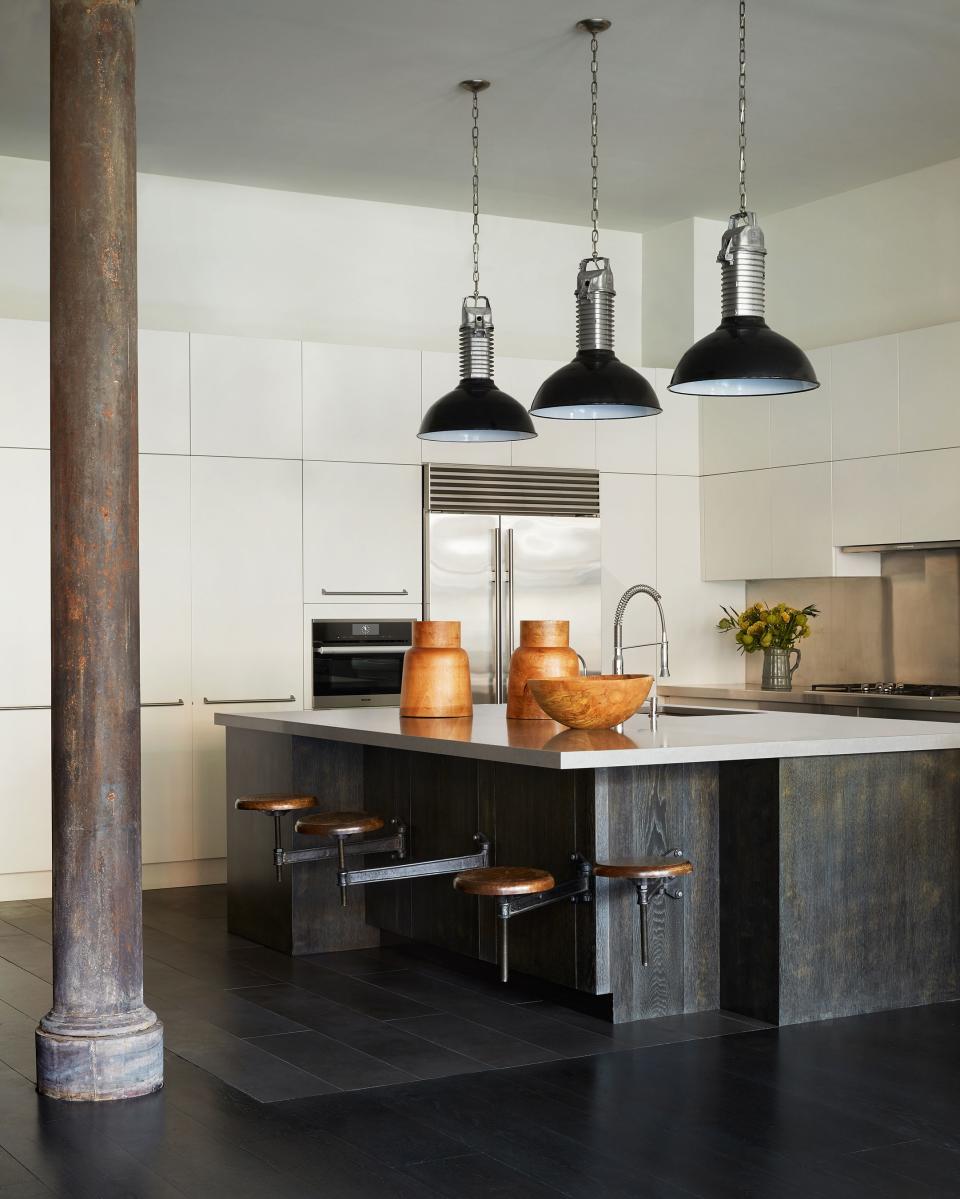
To rein in the volume of the space and improve its balance and flow, Huniford established islands of respite using arrangements of seating areas anchored by circular rugs and unexpected furniture pairings, then dialed up the coziness by employing a palette of sumptuous textures, from the earthy cork wall coverings in the guest bedroom to the crimson velvet upholstery on the dining chairs and benches. Both stylish and pragmatic, the scheme was not without its challenges. “Practicality can be a double-edged sword,” says Huniford. “If something is practical, it’s automatically assumed that it’s not attractive.”
One look at the custom sofa suspended from the ceiling in the living room, a piece that was paired with a Hans Wegner Papa Bear chair and a portrait of Grace Kelly by John Codling—or the metallic Andy Warhol–themed Mylar wallpaper in the powder room, where Liebman says guests retreat to take selfies—proves that’s decidedly not the case here. “There was no formula or attention paid to furnishings from specific periods,” says Huniford of the eclectic interplay of influences. “Jason knows his own sensibility and was open to a lot of different things, from French 1940s classicism to Italian midcentury modernism and Moroccan and Japanese accents. We just wanted something that didn’t feel mass-produced.”
A Tech Entrepreneur’s Cool Yet Practical New York Bachelor Pad
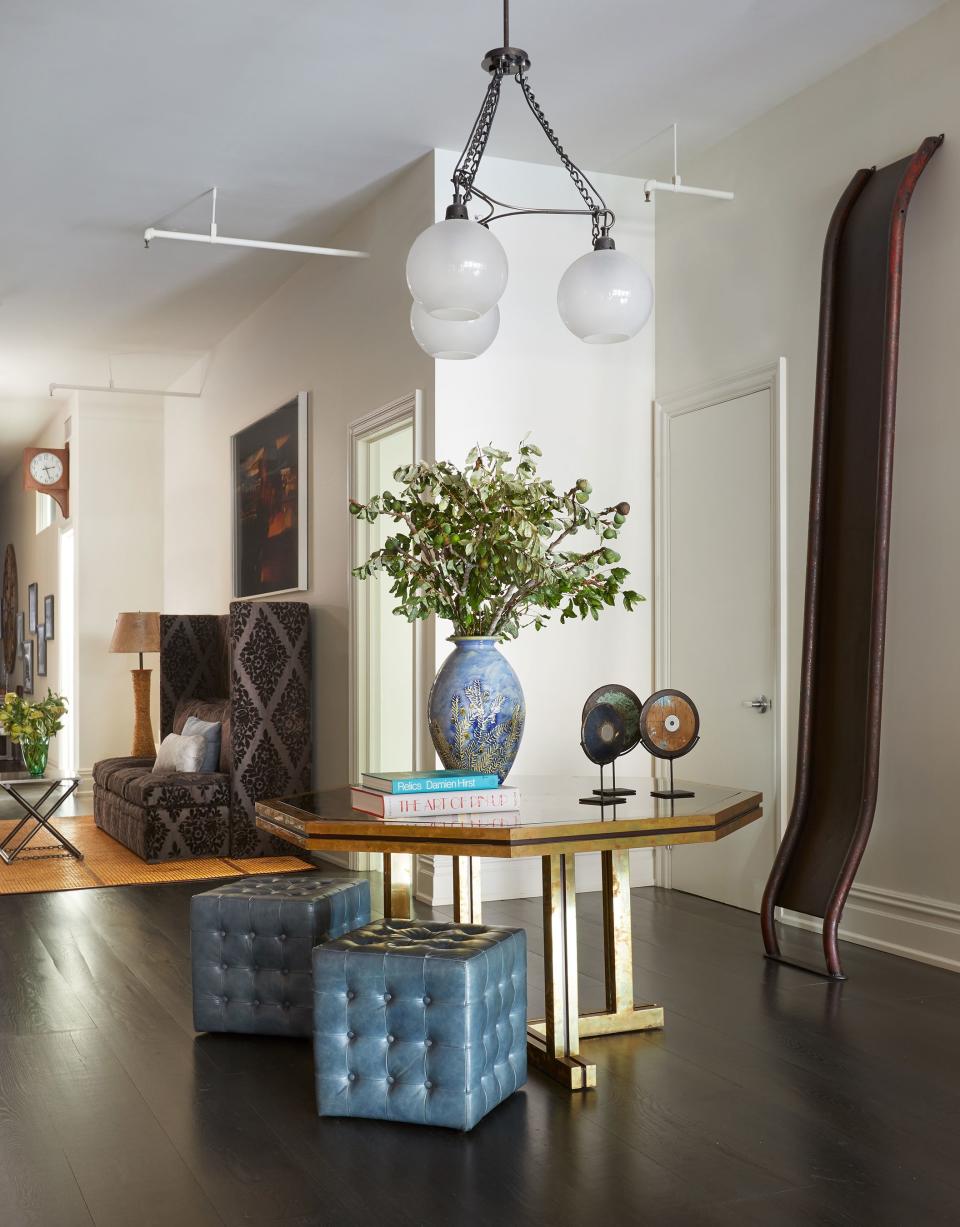
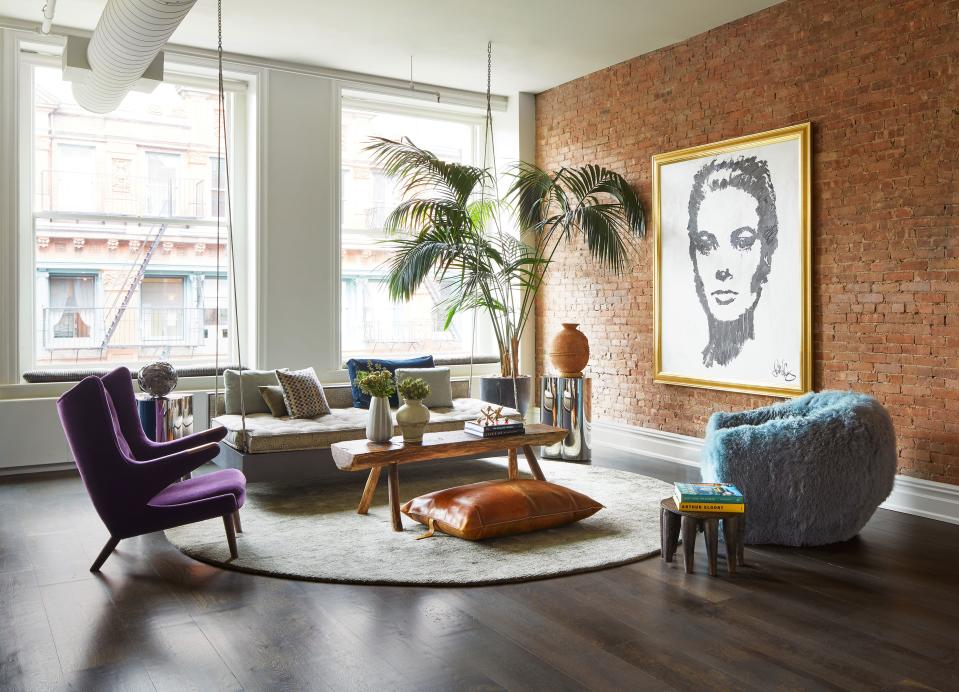
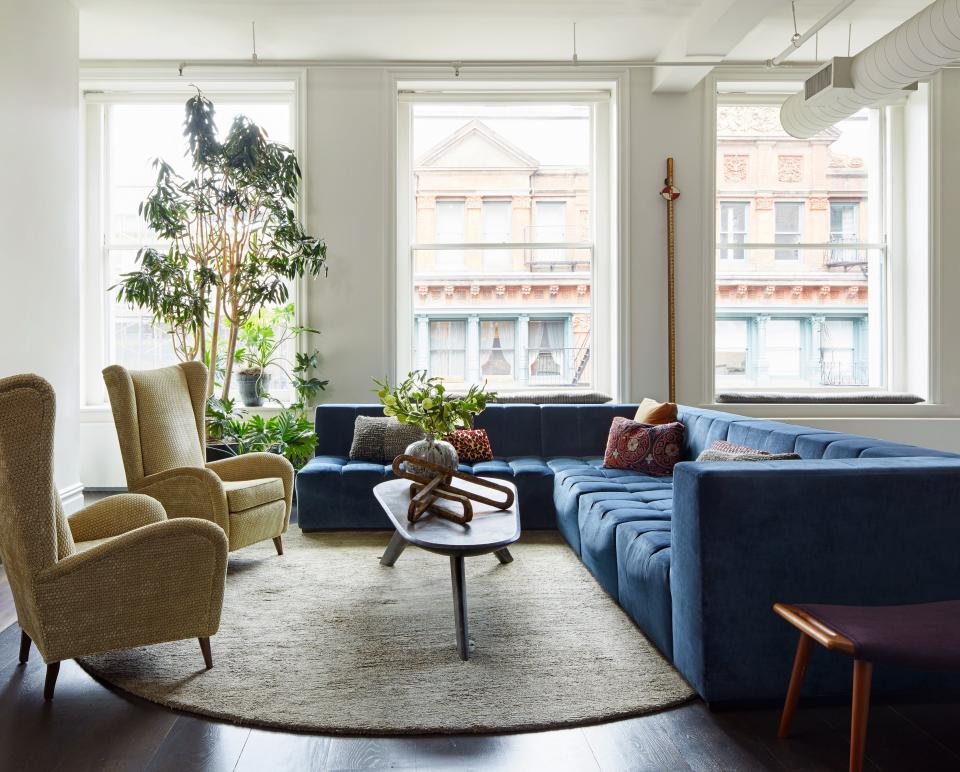
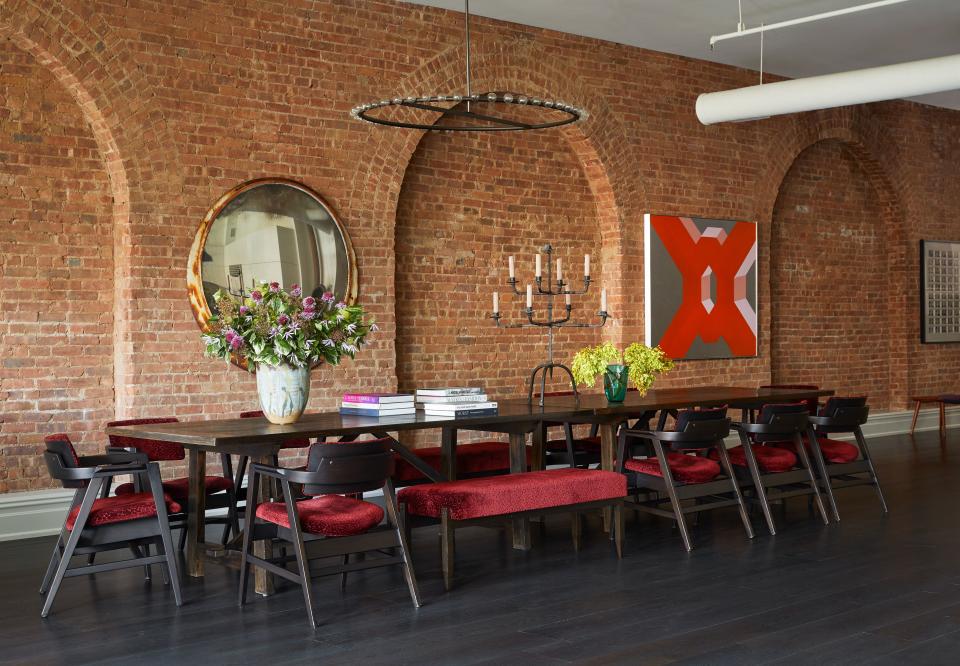
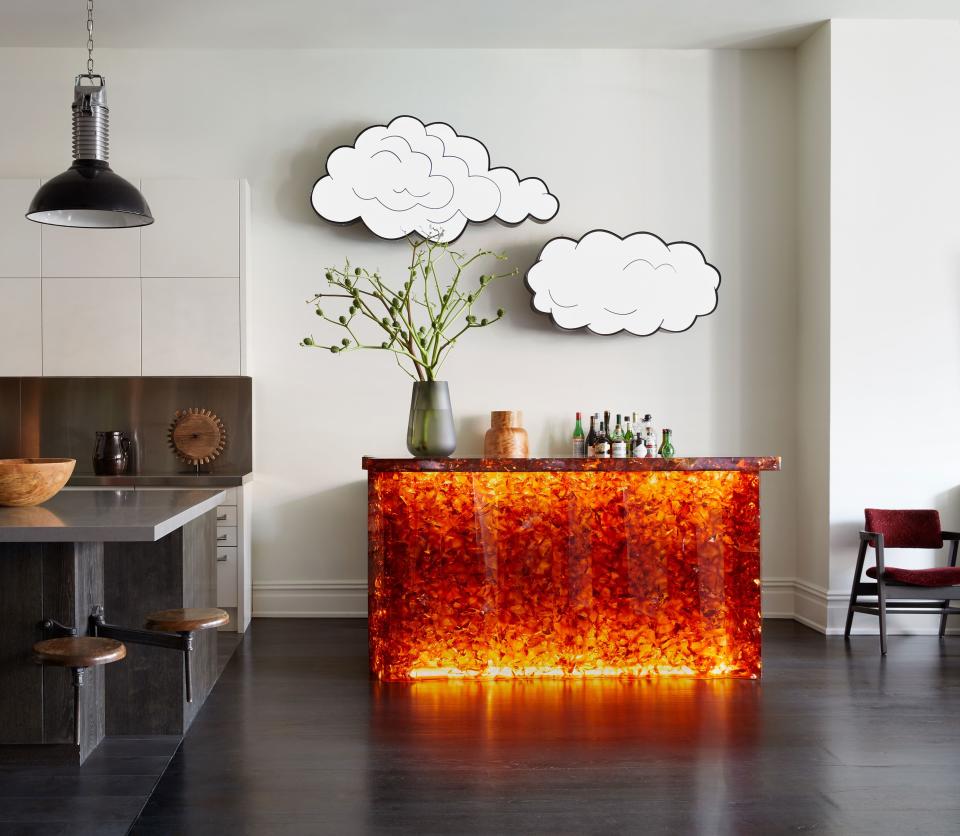
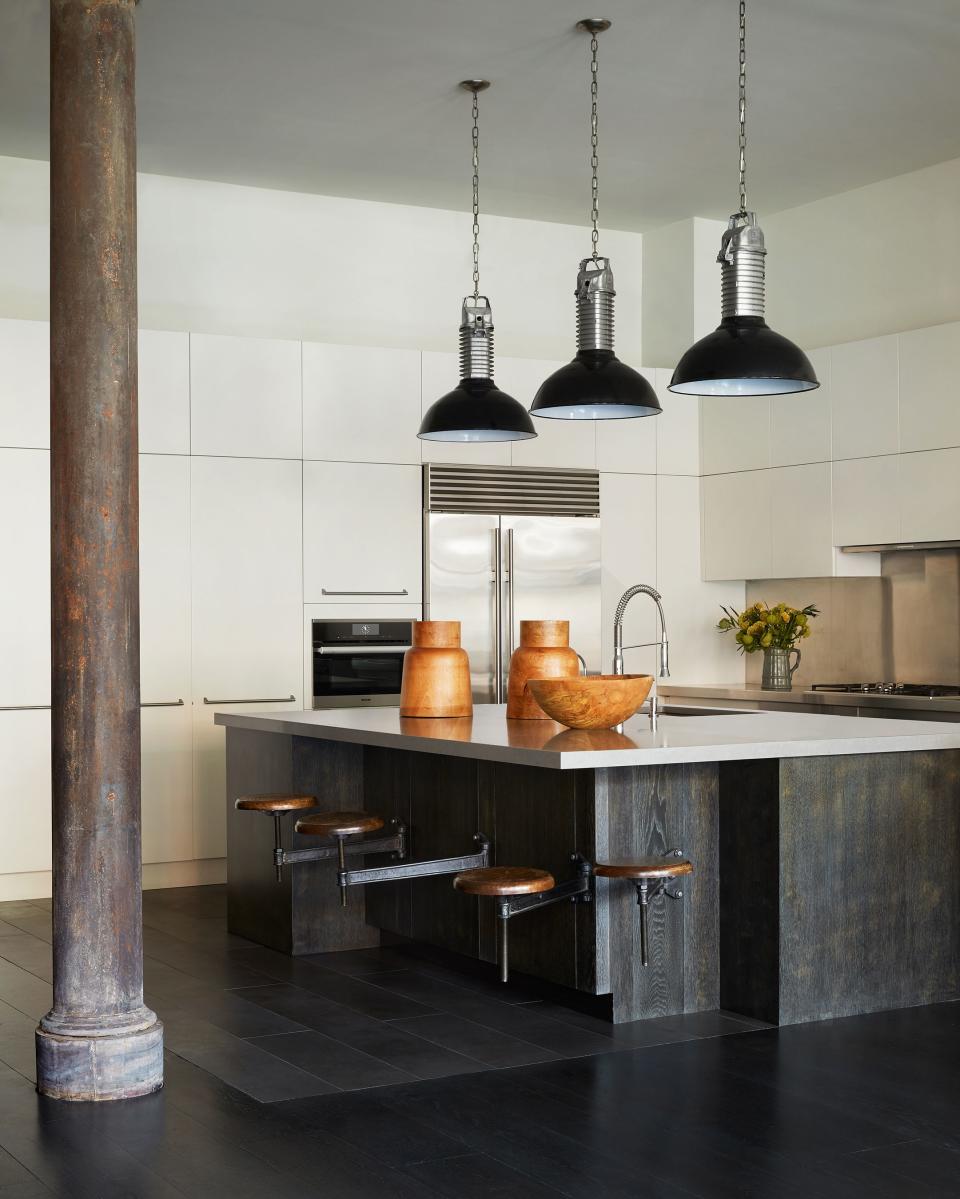
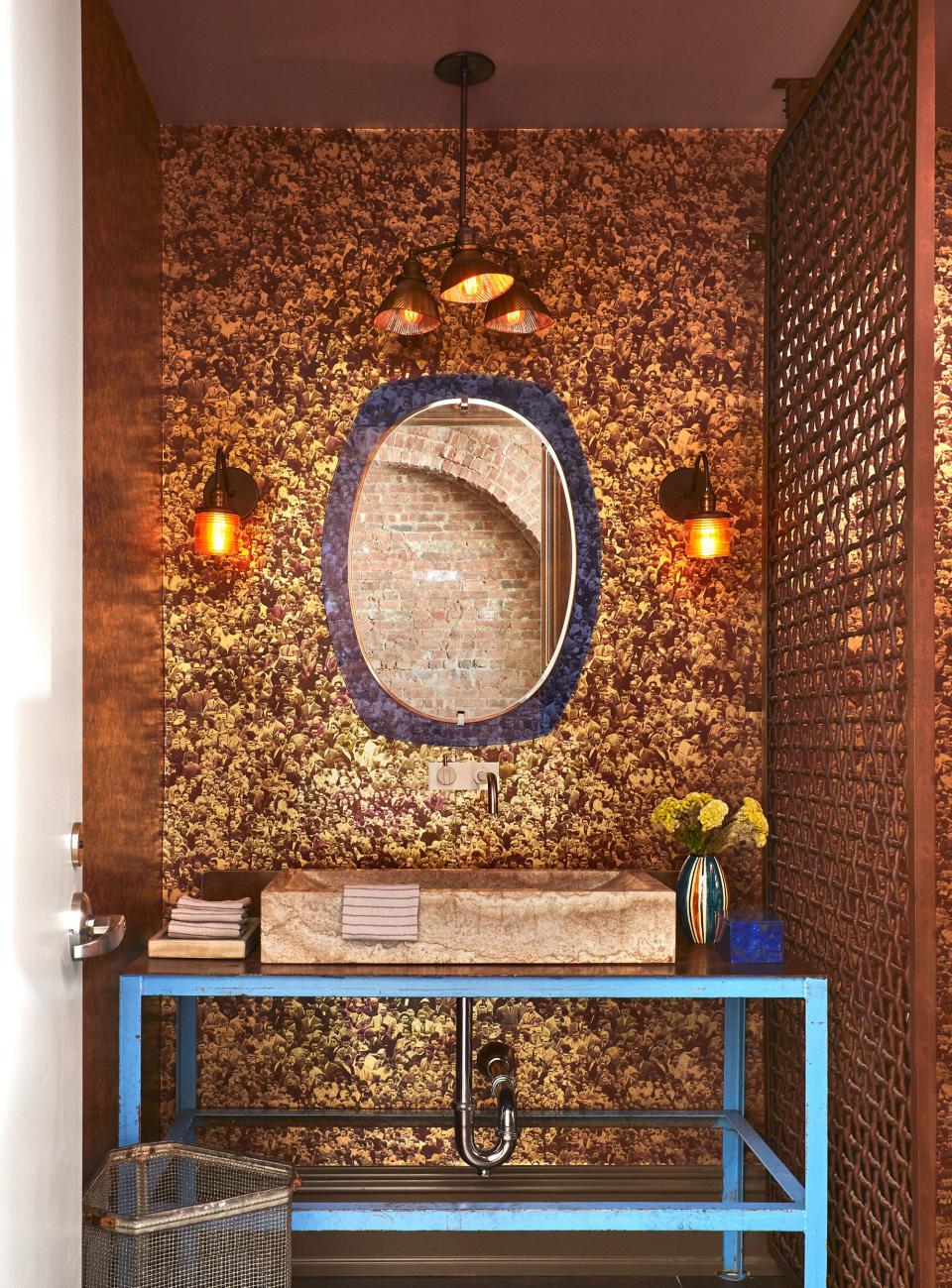
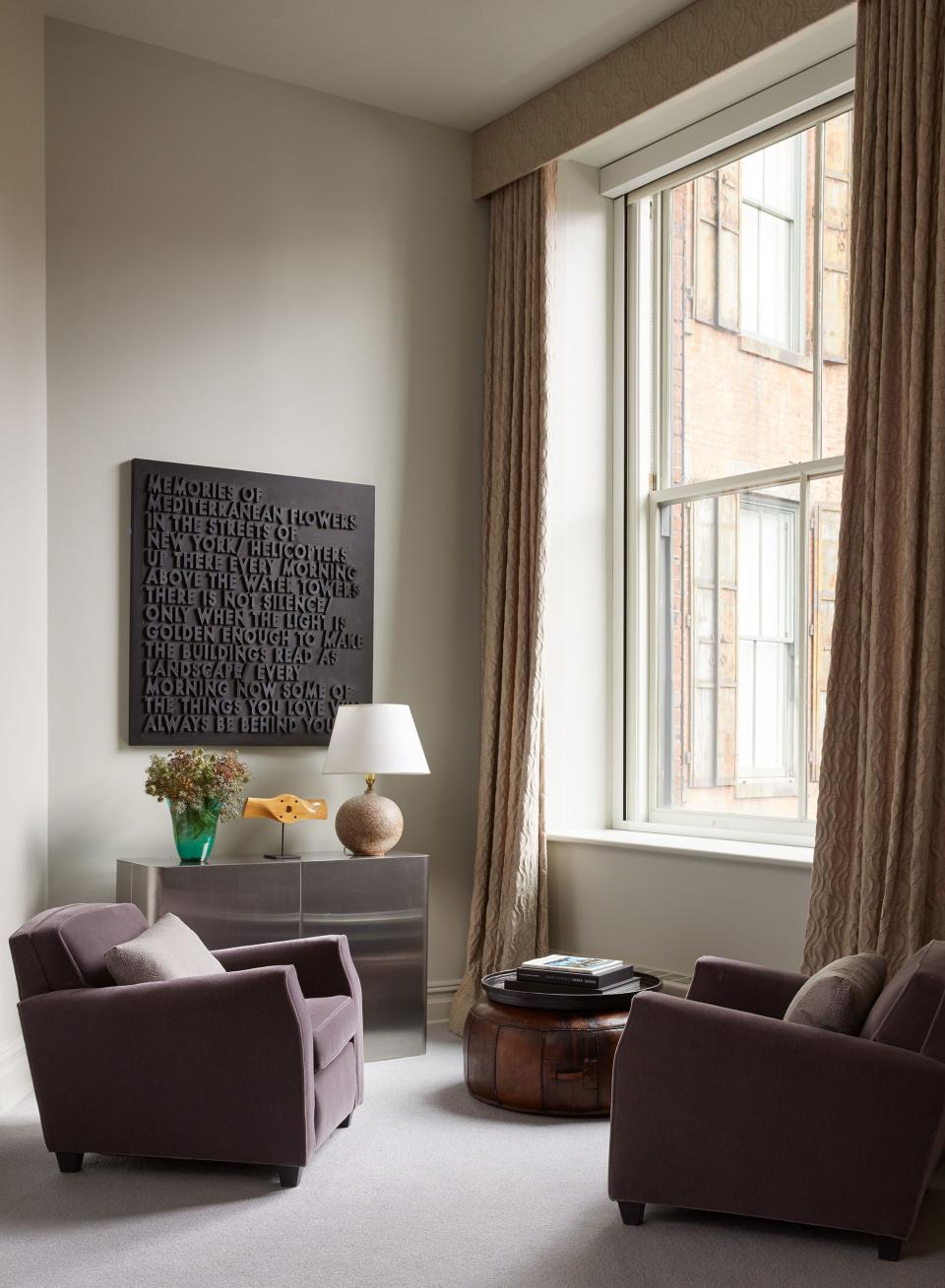
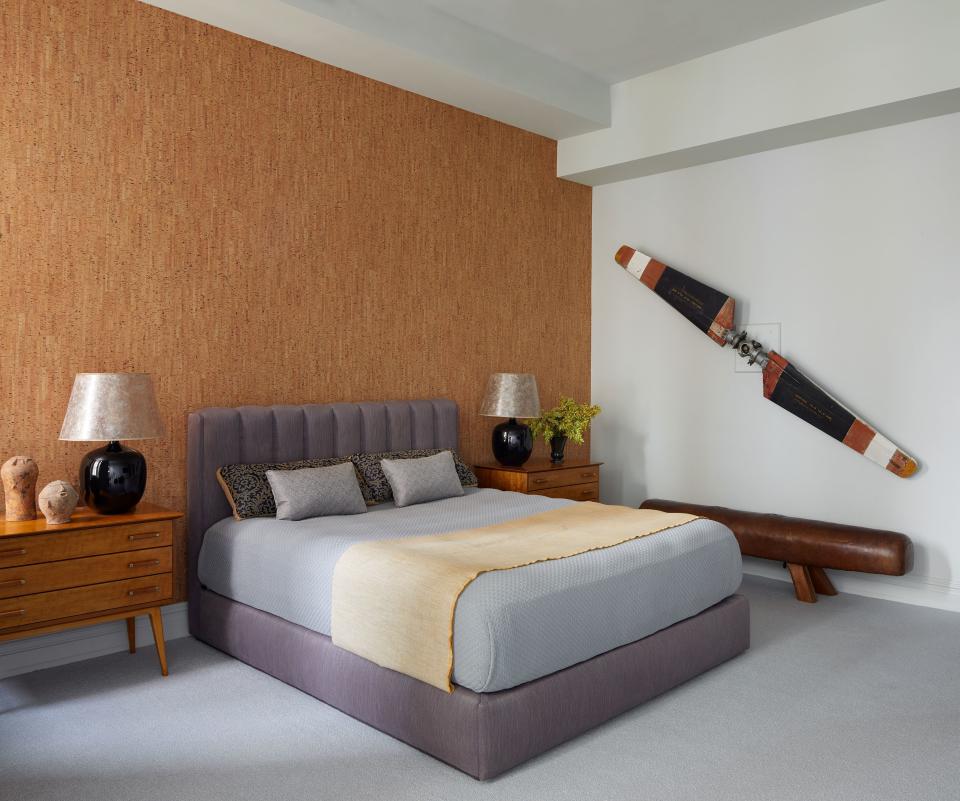
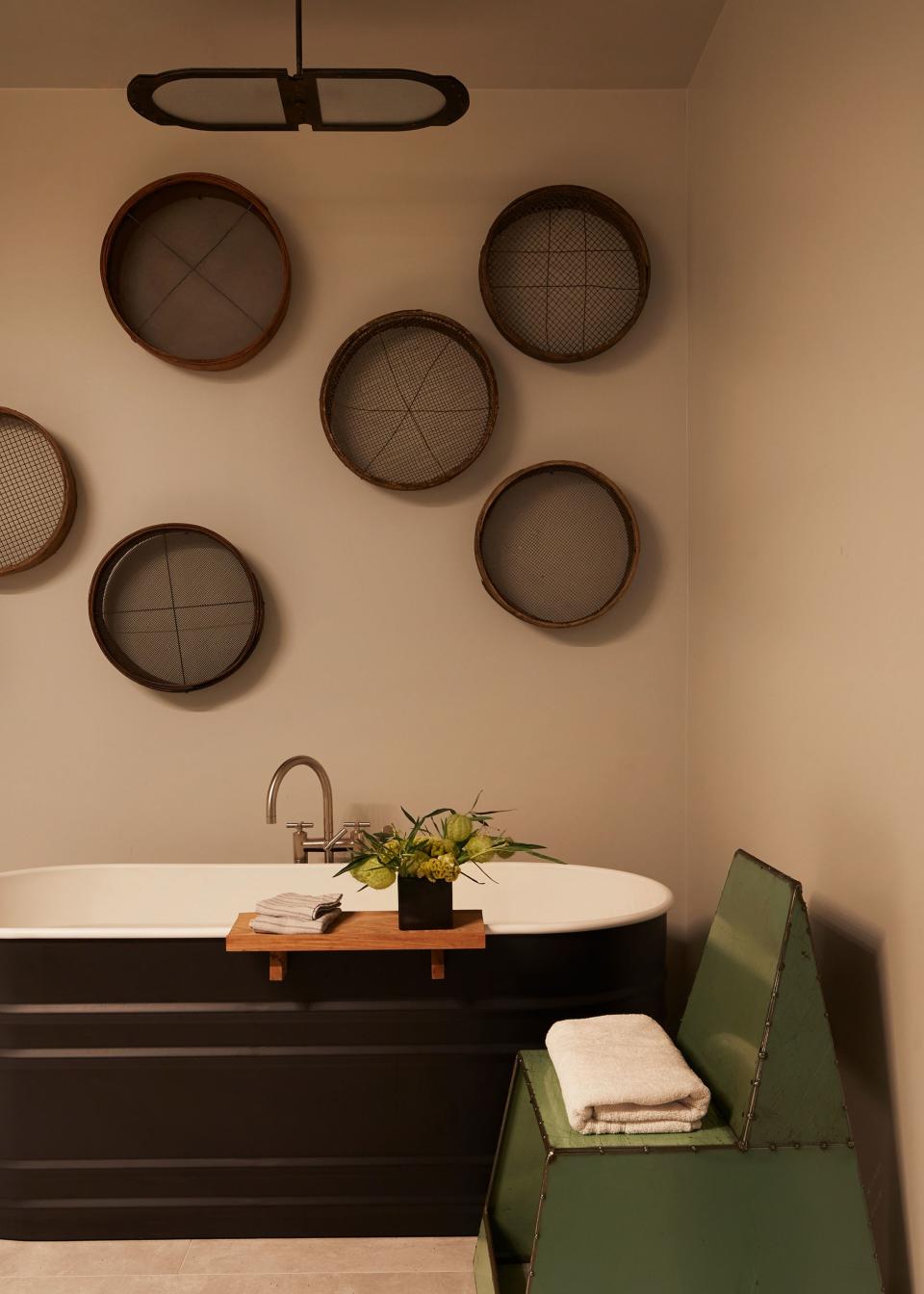
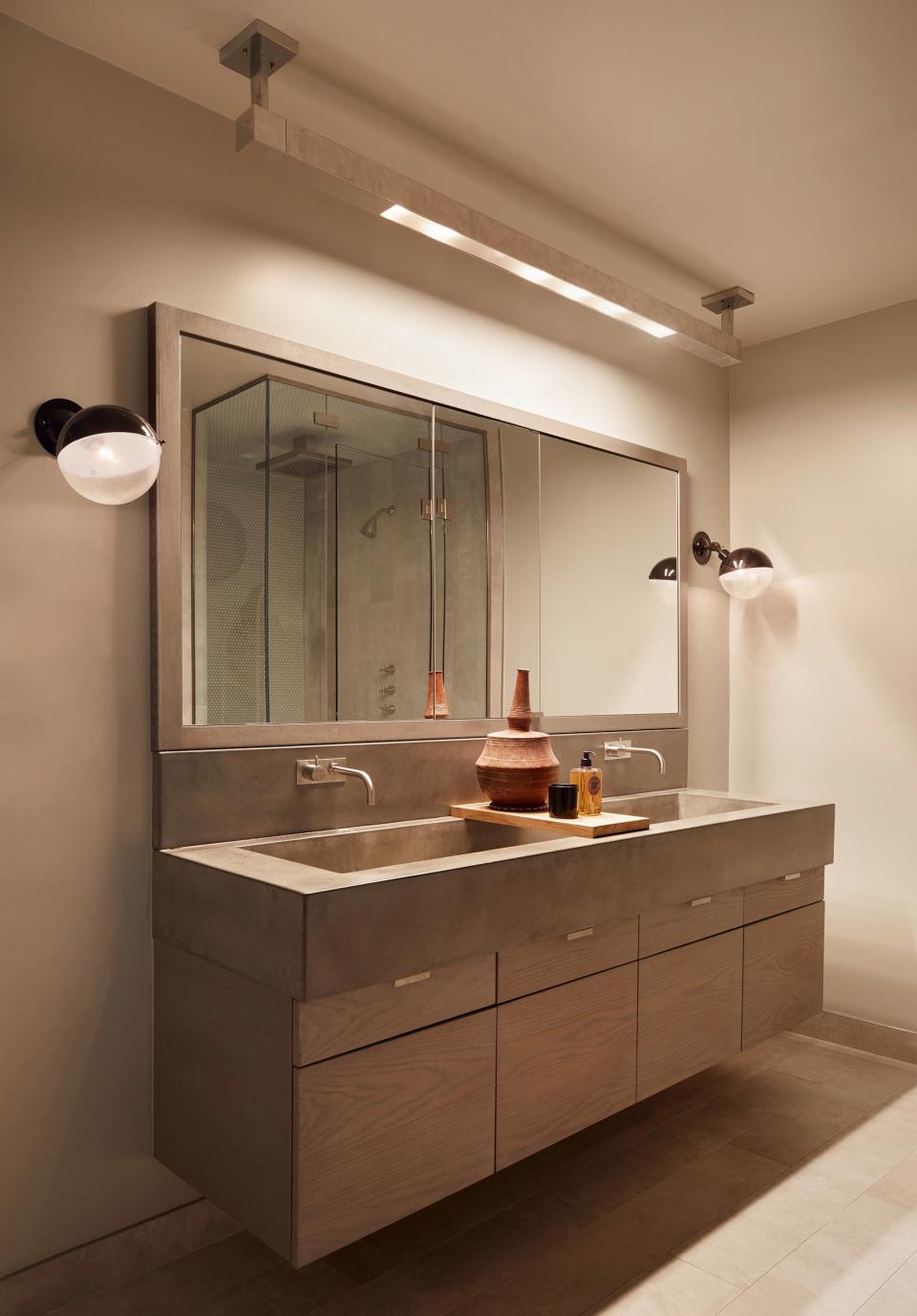
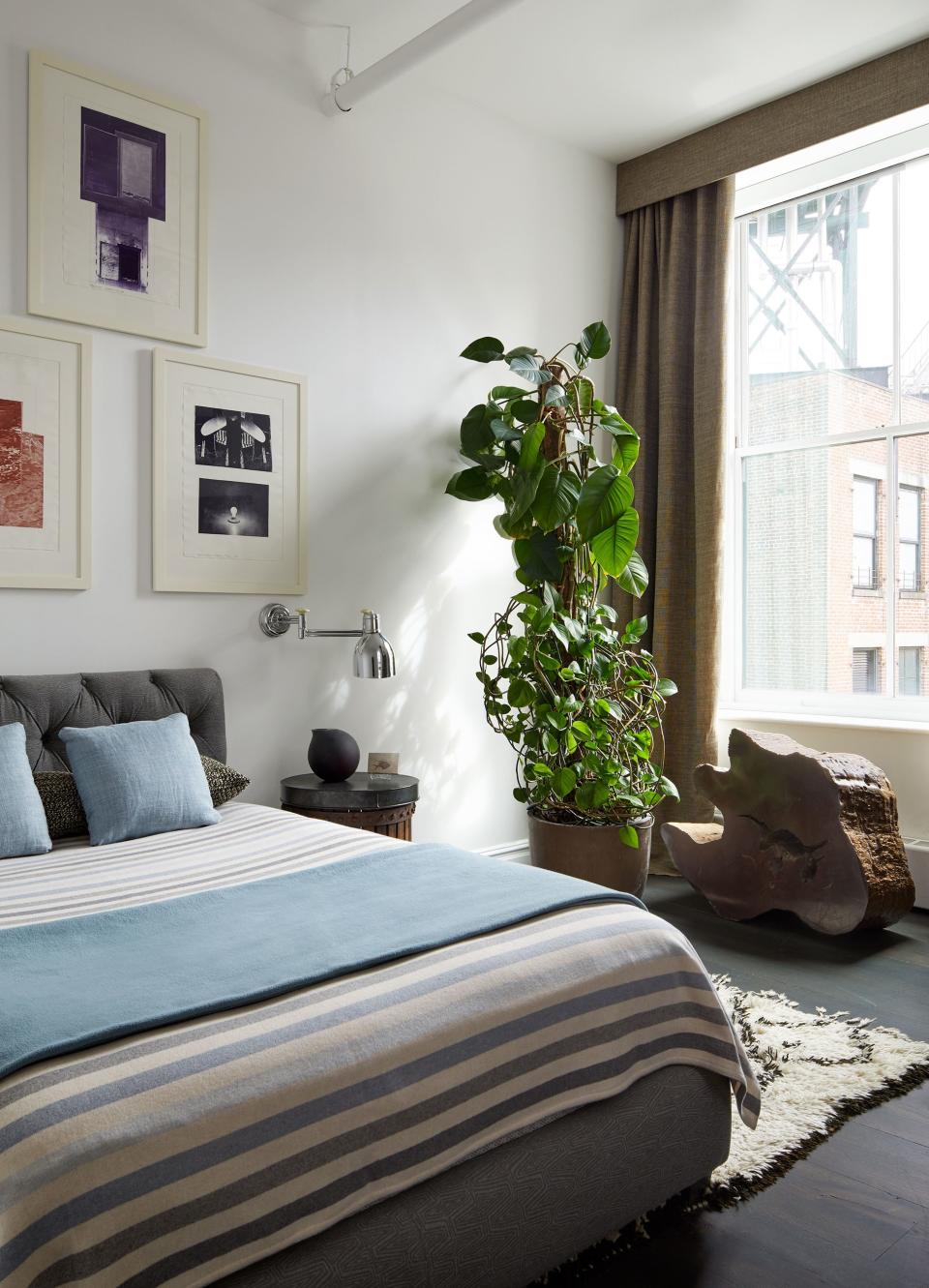
You can feel the originality on display in the 1970s Romeo Rega octagonal brass table that sits in the entry, or the 19th-century club chairs refinished in a Donghia mohair velvet in the study—pieces that straddle the tradition of the space and the modernity of its design, all the while paying respect to the kind of livability that Liebman craved. “I love rotating between the chairs because there are so many incredible places to sit, whether I’m on a business call or just reading a book,” Liebman says.
He also enjoys cooking casual dinners for friends and family in his Caesarstone and stainless-steel kitchen—invalidating yet another New Yorker stereotype, that of the takeout junkie. Of course, not every gathering maintains the quiet serenity Liebman has come to value in his home—for that he can blame a custom cast-resin bar designed by Huniford that comes alive in the evening hours thanks to backlighting that imparts a fiery glow. “That was a really big risk, but it has so much energy, and people just gravitate toward it,” Liebman says. After all, sometimes the best bar in town is the one in your own living room.
Originally Appeared on Architectural Digest

